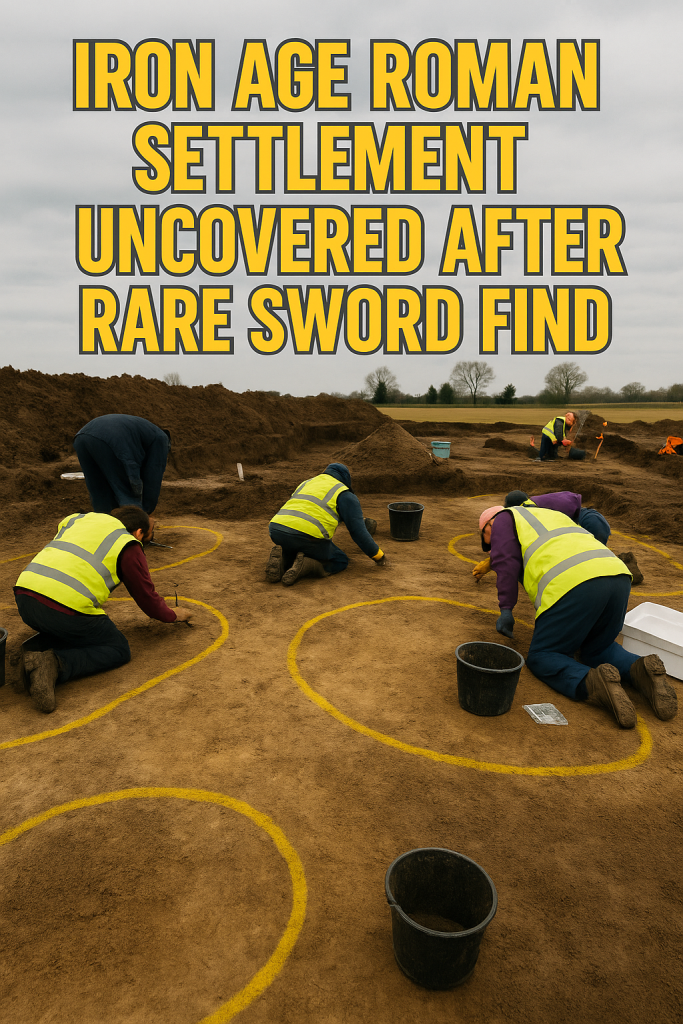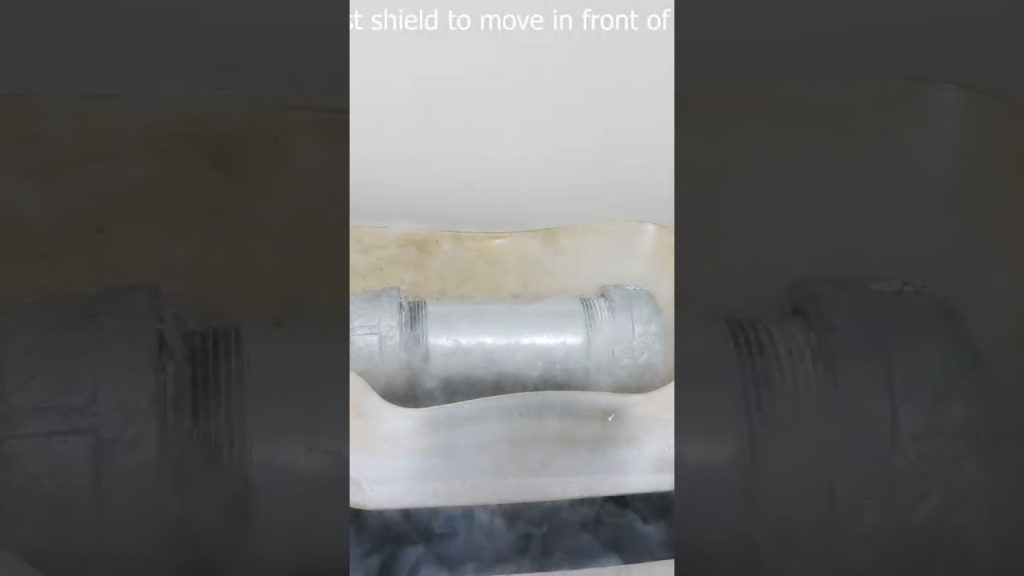Archaeologists have made a groundbreaking discovery after uncovering a rare Iron Age Roman sword, which led to the excavation of a previously unknown Roman settlement. This remarkable find sheds new light on Roman activities during the Iron Age and promises to deepen our understanding of the era’s cultural and military landscape.
The exceptional sword, unearthed during a routine metal-detecting survey in early 2024, stands out due to its rarity and exquisite craftsmanship. Experts confirmed it dates back to the Iron Age, a period roughly spanning from 800 BC to AD 43 in Britain, bridging local Celtic cultures with the encroaching Roman influence. The sword’s preservation and design suggest it belonged to a figure of considerable status, possibly a warrior or local leader who had interactions with Roman forces.
Following the sword’s discovery, a comprehensive archaeological excavation was launched at the site, revealing a sprawling settlement that had lain hidden beneath centuries of soil. The site includes multiple stone foundations, artifacts ranging from pottery shards to metal tools, and remnants of defensive structures that hint at a fortified community.
The excavation team describes the site as a key link between Iron Age tribal societies and the advancing Roman military presence in the region. “This settlement provides invaluable evidence of cultural fusion and coexistence during a tumultuous historical period,” commented the lead archaeologist overseeing the dig. “It illustrates how indigenous communities adapted to, resisted, or collaborated with the Romans prior to formal conquest.”
Iron Age settlements with such direct connections to Roman artifacts are extremely rare, making this find particularly significant. The discovery is expected to challenge previous assumptions about settlement patterns and the spread of Roman influence outside major urban centers.
Key highlights of the excavation include:
- The original site of the sword, found buried near what appears to be a ceremonial area or local chieftain’s dwelling
- Evidence of Roman trade goods mixed with traditional Iron Age items, indicating active exchange networks
- Structural remains suggesting a transition from roundhouses typical of Iron Age Britain to more Roman-style architecture
The sword itself bears intricate engravings not previously documented in similar finds, suggesting a unique blend of local and Roman artistic motifs. Conservators are currently working to preserve the sword while further analyses will determine its metallurgical composition and origins.
This discovery comes at a pivotal moment for archaeology in the region, fueling excitement over potential new insights into Roman-era Britain’s complex societal dynamics. The settlement offers a tangible glimpse into the past, bridging two epochs and offering clues about how local populations negotiated identity, power, and survival amidst the sweeping changes brought by Rome’s expansion.
Plans are underway to open the site for public viewing and educational programs once excavations conclude, aiming to engage communities and highlight the importance of preserving cultural heritage.
As excavation continues, researchers hope to uncover more artifacts that will further illuminate the daily lives, rituals, and interactions of those who once inhabited this remarkable Iron Age Roman settlement. This discovery not only enriches historical knowledge but invites renewed fascination with the enduring legacy of ancient civilizations.



